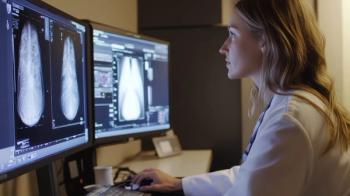
Five Ways to Improve Your Practice
Boost your patient satisfaction and streamline your workflow with these top five tips.
Electronic health records. Digital technology. Teleradiology. Many advancements have changed the face of radiology over the past five years. Some in the industry believe, however, there are five tactics that will best improve your practice.
These steps, they said, can boost your patient satisfaction, as well as streamline your workflow.
Round Out Your Practice
You can speed up your workflow and increase patient satisfaction in one step, said Locke Barber, D.O., radiologist with Kennedy Health System in New Jersey.
“It’s important to have a well rounded skill set in your practice,” Locke said. “With good subspecialists, you have people who can read the more complex cases with substantial familiarity.”
Read All Your Scans In-House
In addition, if your practice is large enough, forgoing teleradiology coverage in favor of in-house care can save time and money, said Joseph Tashjian, M.D., radiologist with St. Paul Radiology in Minnesota. His practice has neuroradiologists available to read scans 24-hours-a-day. This rapid-response care once saved a 20-year-old man found seizing in his dormitory – on-site diagnostic tests revealed a brain abscess.
Coordinate With Other Providers
Tashjian also recommended practices focusing on one area, such a breast cancer, partner with other providers who serve the same patients, including oncologists and plastic surgeons.
“By coordinating to complete diagnostic exams, cultures, and biopsies on the same day, you improve your patient flow and get results within 24 hours,” he said. “You use your strengths as a team to treat patients, and as the radiologist, you become the primary care giver, setting up referring appointments and calling patients with test results. It smooths out the process and alleviates patient stress.”
Use Technology to Your Advantage
Voice recognition software can also save you time when reading reports. Before using the software, turnaround time in Tashjian’s practice took one to two days. Now, he said, it’s within three hours. Urgent cases are even faster – the emergency room receives reports within nine minutes and urgent care centers within 30 minutes.
Empower Your Staff
Getting your staff involved also provides workflow benefits, Locke said. Establish a pre-set protocol for the tests you offer so your technicians automatically know what to do in each situation with each patient.
“If your techs know what to do with MRIs and CTs, then they won’t have to seek you out for guidance, and you can spend time on your other responsibilities,” he said. “They feel empowered, and since they know what to do, they can ask you questions far in advance if they absolutely need to.”
Assistants can also save you time by physically inputting your findings into the RIS while you make the diagnosis, Tashjian said. This tactic also limits how distracted you are during diagnostic activities.
Barber offered one caution, however: do not expand your service lines unless your research indicates there is a real need to do so. Just because you can offer MRIs or PET/CT scans, it doesn’t mean the patient volume will come, he said.
Newsletter
Stay at the forefront of radiology with the Diagnostic Imaging newsletter, delivering the latest news, clinical insights, and imaging advancements for today’s radiologists.



























